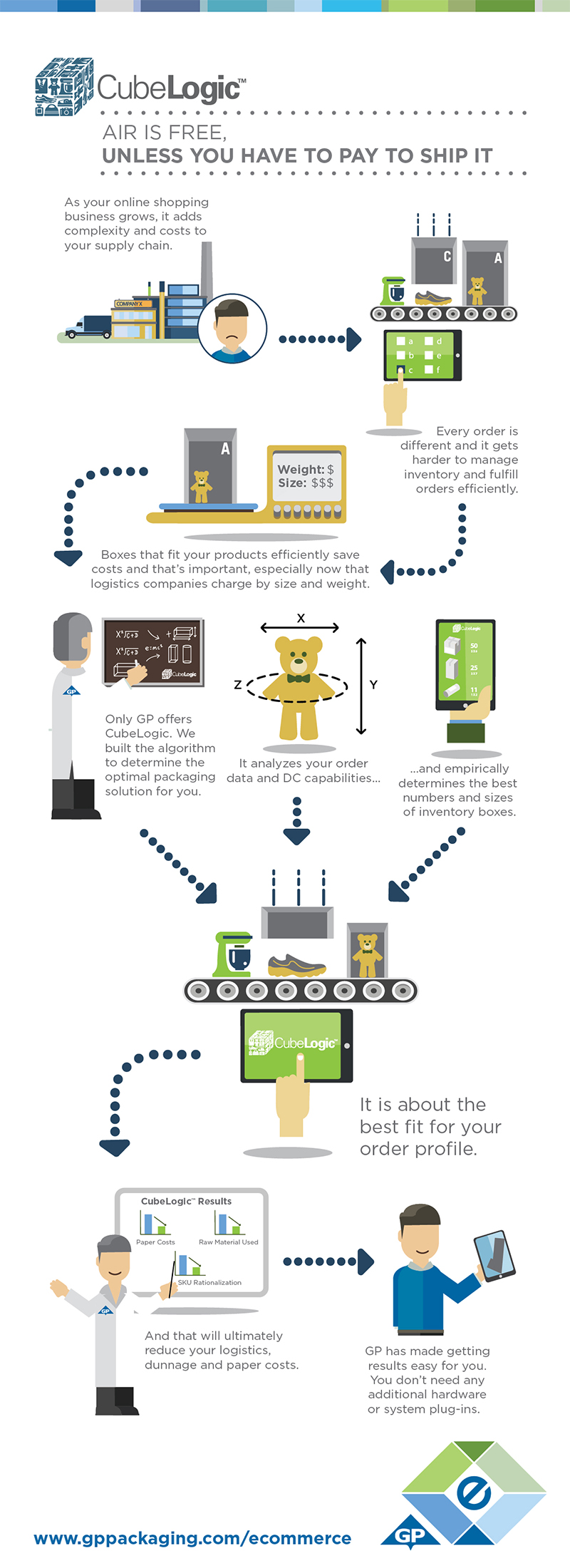As revenue in the U.S. e-Commerce market amounts to $313,980 million in 2016, e-Commerce merchants – and those considering making the move online – must be ready to respond to its trends and challenges.
In early 2015 for example, major carriers UPS and FedEx implemented dimensional weight (DIM) pricing for ground packages.
Shippers compare the dimensional weight of a package to the actual weight, and then bill the larger of the two. As a result, e-Commerce merchants pay for empty space in packages – making it crucial for them to reevaluate their packaging for the most cost-effective solution.
A Virtual Point of Sale
The number of e-Commerce consumers today is 170.4 million – a number that will increase to 189.4 million by 2020, reports Statista. The opportunities in e-Commerce are vast for a variety of market segments. E-Commerce allows manufactures to expand and reach customers who might be outside of their typical reach. Additionally, retailers can offer greater selections online than in brick-and-mortar stores – a reason why specialty products are so popular in online sales.
In the U.S., the mix of online product sales is about 60 percent non-food and 40 percent food, which is a direct contrast of the total in-store CPG sales ratio of about 60 percent food and 40 percent non-food, according to Nielsen.
In addition to food, popular categories that compose the e-Commerce market include cosmetics and pharmaceuticals, consumer electronics as well as clothes and shoes. Bulk-buying categories, like household and personal care products, are also top selections for e-Commerce customers.
Business-to-business retailers are capitalizing on the e-Commerce trend as well. In fact, B2B e-Commerce sales almost double business-to-consumer sales. Frost & Sullivan predicts B2B e-Commerce will reach $12 trillion in sales by 2020, an increase from $5.5 trillion in 2012.
Overcome Overpacking
Along with the excitement of e-Commerce comes the challenge of overpacking – an outer container designed to enclose and secure one or more inner containers leaving too much extra air around a product in its package. In fact, overpacking is one of the biggest mistakes manufacturers make in e-Commerce packaging, according to a 2015 e-Commerce Market Assessment from PMMI, The Association for Packaging and Processing Technologies.
With DIM pricing, excess air adds up when boxes take up more room in the truck than necessary. Moreover, badly overpacked parcels can affect vehicle volumes by more than 300 percent and increases potential for product damage. This results in higher shipping costs for consumers and retailers and increases the number of vehicles on the road – also raising the amount of carbon emissions.
Packing Consortium, a non-profit corporation with members throughout the packaging value chain, recognizes five key criteria for e-Commerce deliveries. Secondary packaging should:
Protect the product
Optimize size to avoid excess
Be designed for recyclability or reuse
Be easy, convenient and safe
- Meet courier-specific requirements
By focusing on these factors, online retailers can facilitate packing material efficiency, help reduce environmental impact and cut costs.
Be a Savvy Shipper
As e-Commerce business grows, it adds to the complexity of a supply chain. If manufacturers have limited manpower and operating efficiency, that can bring costly hurdles. According to the PMMI study, 28 percent of e-Commerce manufacturers outsource their secondary packaging to a third-party logistics company, and 22 percent use a combination of in-house and third-party resources.
PMMI’s study suggests that manufacturers developing e-Commerce capabilities enlist the help of a secondary packaging specialist. After all, a packaging specialist that understands the challenges and solutions of e-Commerce can provide services outside of in-house capabilities that will reduce issues faced by manufacturers in the long run.
Article topics
Email Sign Up


















